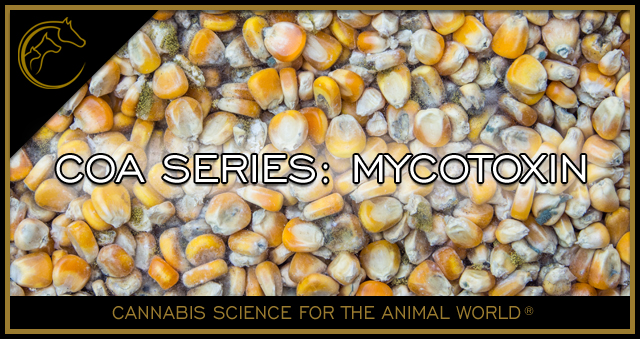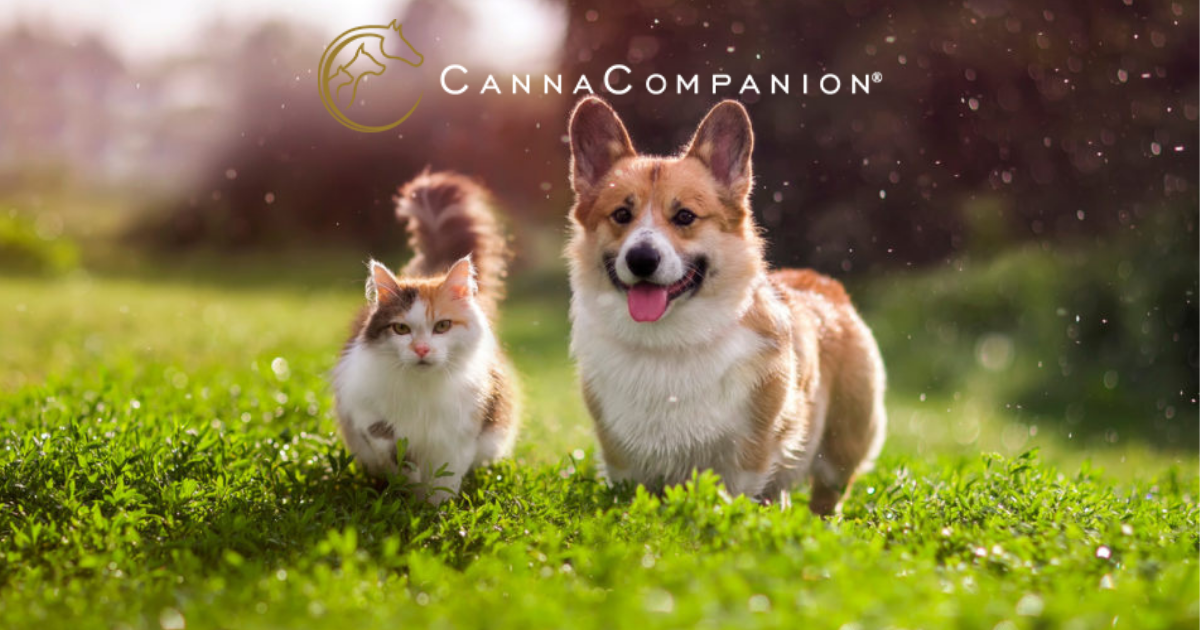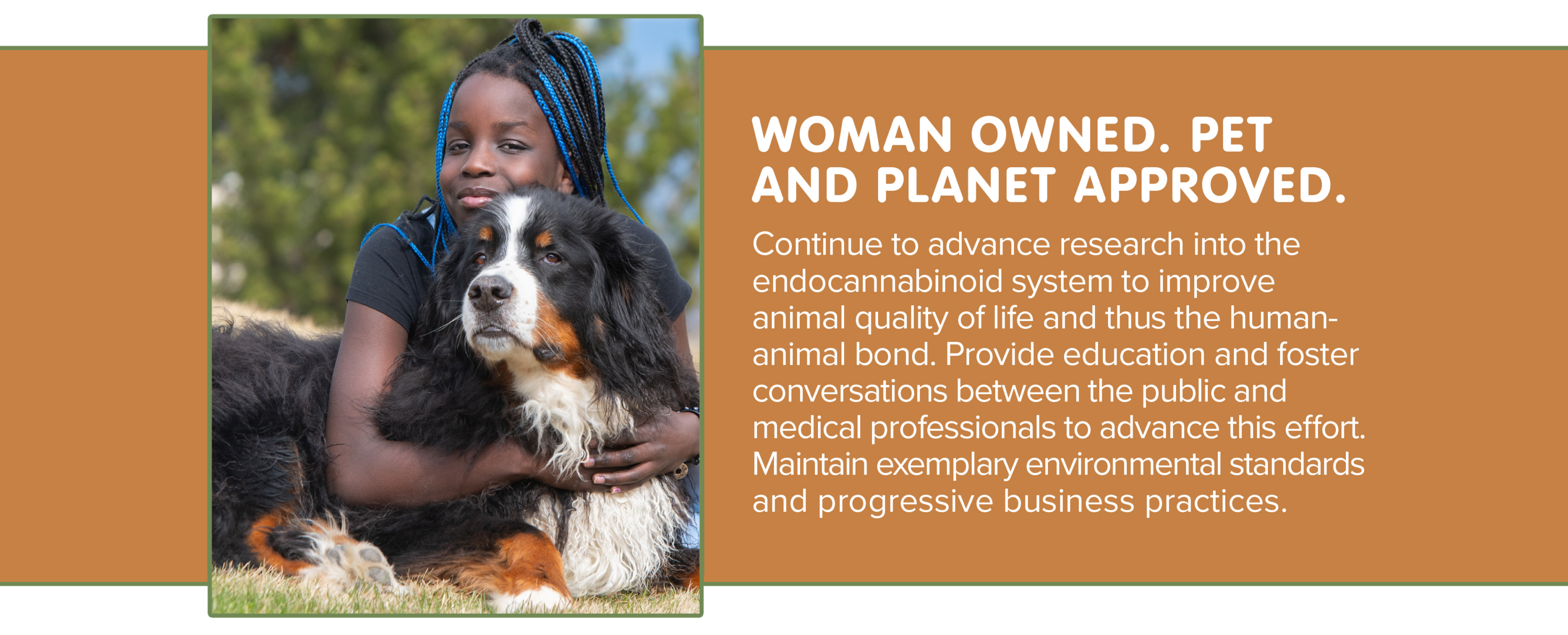COA Series: Mycotoxins
 Pets are important members of our families and we always want to ensure we’re giving them the very best. There are reviews, consumer reports, and more that we can look at to help us determine these things, but sometimes it’s just not enough information. Other times, that information is presented in a manner that isn’t readily accessible to the layperson. That is why we here at Canna Companion are breaking down the details of what can be found on a Certificate of Analysis and why those tests are important.
Pets are important members of our families and we always want to ensure we’re giving them the very best. There are reviews, consumer reports, and more that we can look at to help us determine these things, but sometimes it’s just not enough information. Other times, that information is presented in a manner that isn’t readily accessible to the layperson. That is why we here at Canna Companion are breaking down the details of what can be found on a Certificate of Analysis and why those tests are important.
In part two of our Certificate of Analysis (COA) Series, we detail mycotoxin testing. In our last article, we discussed the importance of Residual Solvent Analyses (RSA) in making sure chemical toxins leftover from cannabis compound extract processes are absent or well-below toxic levels for cats and dogs. One of those solvents, which is quite easy to remove from end products, is ethanol. Most ethanol on the market is made from corn, some of which comes from crops contaminated with mycotoxin producing organisms.
Canna Companion values the health of our patients above all else. Throughout this series, we provide insight into our testing procedures which often exceeds federal testing requirements to better protect the welfare of your pet. As a reminder, tests run on ingredients and final products include:
- Residual Solvent Analysis
- Mycotoxin
- Pesticides
- Heavy Metals
- Microbial
- Potency & Terpenes.
Mycotoxins, like aflatoxin and ochratoxin, are a group of natural, highly toxic byproducts of some Aspergillus and Penicillium fungi. These toxins develop when certain crops are improperly stored at temperature and humidity levels that perpetuate fungal growth. The risk increases with environmental stress to crops such as drought or insect damage, improper field management, and inappropriate handling. Crops known to be affected by fungal contamination include corn, peanuts, rice, soybeans, wheat, and oats. The organisms and their secondary metabolites, mycotoxins, are so ubiquitous that approximately 25% of the world’s food supply is contaminated, causing death in human and non-human animals.
Aflatoxins can be immunosuppressive and carcinogenic, damage the liver, cause anemia, and more, even at extremely low levels. They are fat soluble and easily absorbed from the GI tract of dogs and cats. A little over a decade ago, hundreds of dogs died from liver failure due to eating commercial dry dog food contaminated with aflatoxin. Ochratoxin is less common, but just as deadly, also causing cancer and usually targeting the kidneys. There is very little which can be done once toxicity occurs, but fortunately a lot which can be done to prevent contamination in the first place. It all starts with testing.
Why is mycotoxin testing vital?
Ethanol, CO2, and butane/propane are currently the most common extraction solvents utilized in the Cannabis industry. Ethanol is often made by fermenting corn. Mycotoxins, if present, survive the fermentation process. When this mycotoxin-contaminated ethanol is used in the processing of any Cannabis products the mycotoxin is transferred to them.
Unfortunately, most poor-quality, damaged, and improperly stored corn is diverted into ethanol production. While mycotoxins do survive fermentation and distillation processes, they should only be measurable in the solid co-products, not the liquid alcohol. Any ethanol product contaminated with mycotoxin is likely the result of improper distillation, filtration, and cleaning techniques. As a general rule, since human and pet food companies place large orders, they get to choose the quality of corn they purchase. They do not wittingly purchase contaminated grain. Reputable companies make sure the corn they use meets or exceeds FDA action levels.
Because mycotoxins are not concentrated in ethanol, it is acceptable to test for them only at the corn harvesting stage. Testing of ethanol is not required by any regulatory agency. Restrictions are, however, placed on acceptable quantities of mycotoxins found in the corn used to make grain alcohols. FDA Action Levels are as follows, based on intended use of the corn.
FDA Action Levels for Aflatoxins
| Commodity | Level (ppb) |
| Milk | 0.5 |
| All feedstuff other than corn | 20 |
| All products, except milk, designated for humans | 20 |
| Corn for immature animals & dairy cattle | 20 |
| Corn for breeding beef cattle, swine & mature poultry | 100 |
| Corn for finishing swine | 200 |
| Corn for finishing beef cattle | 300 |
| Cottonseed meal (as feed ingredient) | 300 |
Cats and dogs are especially susceptible to the effects of mycotoxins, and while the lethal dose (>300 pbb) is far greater than what is allowed in non-milk products, severe illness can occur with chronic low dose exposure. That susceptibility is, in part, dependent upon factors such as genetics, age, hormonal and nutritional status, and concurrent disease. As a result, if a company making products for cats or dogs utilizes ethanol extracted or washed products in any ingredient, both that ingredient and the final product should be tested for aflta- and ochratoxins.
To protect the health of your pet, Canna Companion requires all ingredients, pro-ingredients, and finished products have total mycotoxin levels limited to 0-19 ppb. We are medical professionals and understand the adverse medical implications these fungal-based contaminants pose for our patient population. We strive to provide products which are clean and consistent, relying on rigorous testing practices to help fulfill that objective. 



